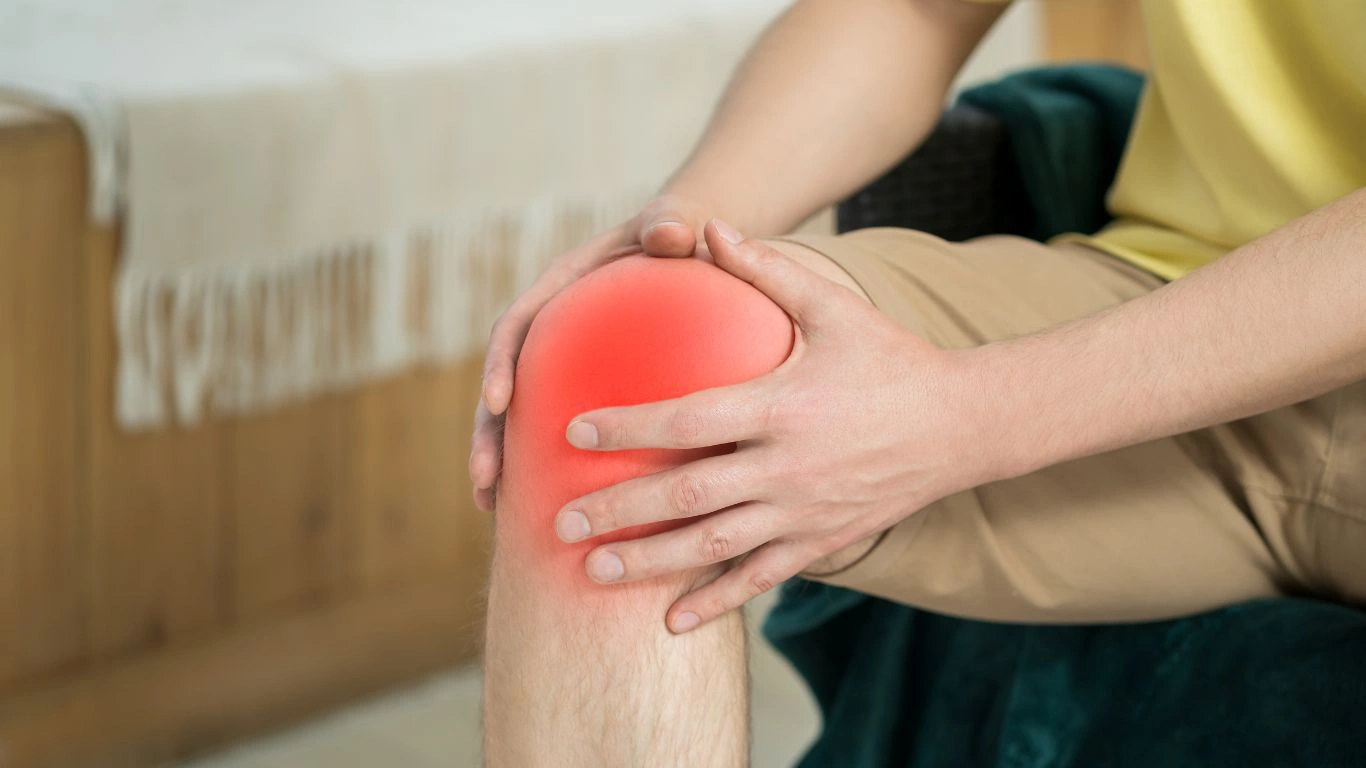Understanding the Connection Between Rheumatoid Arthritis and High Blood Pressure
As a Rheumatology Nurse Practitioner with years of experience treating patients, I’ve seen firsthand how chronic conditions can intertwine in complex and unexpected ways. One of the most concerning combinations I’ve observed is the connection between rheumatoid arthritis (RA) and high blood pressure (HBP). It’s often not immediately clear how the two conditions relate, but understanding this link is crucial for both healthcare providers and patients. High blood pressure is a common co-morbidity among individuals with RA, and if left unchecked, it can lead to serious complications, making effective management of both conditions essential. In this blog, we’ll explore why this connection exists, how RA can contribute to high blood pressure, and what can be done to address both conditions in tandem.
The Link Between Rheumatoid Arthritis and High Blood Pressure

Rheumatoid arthritis is an autoimmune disease that primarily affects the joints, leading to pain, inflammation, and stiffness. However, it’s not just the joints that are impacted by RA. The inflammatory processes involved in RA can affect various parts of the body, including the cardiovascular system, which is where the connection to high blood pressure becomes particularly significant. Inflammation plays a central role in both RA and high blood pressure, and it’s important to understand how the two may be linked.
Inflammation: The Common Thread
Both rheumatoid arthritis and high blood pressure are associated with chronic inflammation. For RA, the immune system mistakenly attacks the joints, leading to swelling and pain. In the case of high blood pressure, inflammation contributes to the thickening and stiffening of blood vessels, which can make it harder for the heart to pump blood effectively. This increased resistance can raise blood pressure.
Research has shown that individuals with RA often have higher levels of inflammation markers in their blood, such as C-reactive protein (CRP), which is a known indicator of systemic inflammation. These elevated inflammation levels don’t just stay localized to the joints—they can also affect the blood vessels and the heart. Over time, this chronic inflammation can contribute to the development of high blood pressure.
How RA Medication Affects Blood Pressure
Managing rheumatoid arthritis usually involves the use of medications aimed at reducing inflammation and controlling the autoimmune response. Nonsteroidal anti-inflammatory drugs (NSAIDs) are often used to alleviate pain and swelling. However, while these medications are effective in managing RA symptoms, they can have an unintended side effect—an increase in blood pressure.
NSAIDs work by blocking certain enzymes that promote inflammation, but they also have the potential to cause fluid retention and kidney problems, both of which can contribute to high blood pressure. Additionally, corticosteroids, another class of drugs often prescribed for RA, can also lead to an increase in blood pressure when used long-term. The risk of high blood pressure in patients with RA who are on these medications is an important consideration in their treatment plan.
Understanding the Role of the Heart in Rheumatoid Arthritis

One of the less discussed aspects of rheumatoid arthritis is its effect on the cardiovascular system. While RA is often seen as a disease affecting only the joints, it can actually impact the heart and blood vessels. Studies have found that people with RA are at an increased risk of developing heart disease, and this is partly due to the chronic inflammation that RA causes. The inflammation can lead to the buildup of plaque in the arteries, which increases the risk of atherosclerosis (narrowing of the arteries) and other cardiovascular issues, including high blood pressure.
Interestingly, it’s not just the direct effect of inflammation on the heart that’s concerning, but also the indirect effects. For example, people with RA often have a lower level of physical activity due to pain and fatigue, which can contribute to weight gain and a sedentary lifestyle. These factors further increase the risk of developing high blood pressure. This means that managing RA effectively goes beyond treating joint symptoms—it also involves taking steps to maintain cardiovascular health.
Risk Factors for Developing High Blood Pressure with RA
Several factors can increase the likelihood of a person with rheumatoid arthritis developing high blood pressure. Here are a few key risk factors to consider:
- Age: As with any population, the risk of high blood pressure increases with age. Individuals with RA who are over the age of 50 are at a higher risk of developing hypertension.
- Obesity: Extra weight places additional strain on the heart and can contribute to the development of high blood pressure. RA patients who are overweight or obese are at an increased risk of both RA symptoms and hypertension.
- Physical Inactivity: A sedentary lifestyle can lead to weight gain and increase the likelihood of high blood pressure. It’s important for RA patients to engage in gentle, low-impact exercises to maintain heart health.
- Medication Use: As mentioned, certain medications used to treat RA, such as NSAIDs and corticosteroids, can elevate blood pressure. Long-term use of these medications should be carefully monitored.
- Family History: A family history of high blood pressure or cardiovascular disease increases the risk of developing high blood pressure, even for those with RA.
Managing Both RA and High Blood Pressure

As a healthcare provider, I always emphasize the importance of managing both RA and high blood pressure concurrently. The good news is that many of the same strategies that help control RA can also help lower blood pressure. For example, adopting an anti-inflammatory diet, engaging in regular physical activity, and carefully managing medication use are all crucial steps. Moreover, routine blood pressure monitoring is essential for patients with RA, especially those who are on medications that could raise blood pressure.
In addition to these lifestyle factors, medications for high blood pressure may be prescribed to help manage both conditions. Angiotensin-converting enzyme (ACE) inhibitors, calcium channel blockers, and diuretics are commonly used to control hypertension and can be safely used alongside RA treatments. It’s important for healthcare providers to work together to create a treatment plan that addresses both conditions, ensuring that neither is left unmanaged.
The Role of Diet in Managing Inflammation and Blood Pressure
Diet plays a critical role in managing both RA and high blood pressure. Anti-inflammatory foods, such as fatty fish, leafy greens, and nuts, can help reduce inflammation and support heart health. Additionally, reducing sodium intake can help control blood pressure. A well-balanced diet that addresses both inflammation and cardiovascular health can make a significant difference for RA patients.
In conclusion, the connection between rheumatoid arthritis and high blood pressure is a complex and important issue that requires careful attention and management. By understanding the ways these two conditions interact and taking proactive steps to address both, patients can live healthier, more balanced lives. In the next section, we’ll dive deeper into specific strategies for managing RA and high blood pressure in more detail, including medications and lifestyle interventions that make a real difference.
Strategies for Managing Rheumatoid Arthritis and High Blood Pressure

When it comes to managing both rheumatoid arthritis and high blood pressure, a holistic approach is key. Having worked with countless RA patients over the years, I’ve seen how challenging it can be to juggle the needs of both conditions. The good news is that with the right strategies in place, patients can effectively manage both. In this section, we’ll look at the practical steps that individuals with RA can take to keep their blood pressure in check while also managing their rheumatoid arthritis symptoms.
1. Medication Management: Finding the Right Balance
First and foremost, working closely with your healthcare provider to manage your medications is essential. As I mentioned earlier, medications like NSAIDs and corticosteroids are commonly used to treat RA, but these can raise blood pressure. As a result, it’s crucial to balance the need to manage RA symptoms with the goal of controlling blood pressure.
In my experience, some patients with RA may need to switch to alternative RA treatments if their blood pressure starts to rise. Disease-modifying antirheumatic drugs (DMARDs) and biologics can be helpful in managing the underlying inflammation without the blood pressure-raising effects of traditional NSAIDs and steroids. However, these medications come with their own considerations and must be prescribed and monitored carefully by your doctor.
If high blood pressure is already a concern, your doctor might also prescribe antihypertensive medications, like ACE inhibitors or calcium channel blockers. These medications can work in tandem with your RA treatments to control both conditions. The key is finding a treatment regimen that addresses both RA and high blood pressure without one exacerbating the other.
2. Regular Monitoring of Blood Pressure
Given the connection between RA and high blood pressure, it’s essential to monitor blood pressure regularly, especially for those with RA who are on medications that may elevate it. Many patients with RA see their healthcare providers regularly for joint-related issues, but often blood pressure isn’t checked as frequently as it should be.
I always advise my patients with RA to invest in a home blood pressure monitor. This simple step can make a huge difference, as it allows individuals to keep track of their blood pressure on a daily basis. If you notice your numbers creeping up, you can address the issue with your doctor sooner rather than later. Early intervention is key to preventing complications, such as stroke, heart disease, or kidney damage.
The Importance of Physical Activity in Managing RA and High Blood Pressure

One of the most effective strategies I recommend for managing both RA and high blood pressure is regular physical activity. While RA can make it difficult to stay active due to joint pain and stiffness, it’s crucial to find ways to incorporate movement into your routine. Exercise is one of the most beneficial things you can do for your overall health, and it’s especially important when managing chronic conditions like RA and high blood pressure.
Exercise can help lower blood pressure by improving circulation and strengthening the heart, which makes it more efficient at pumping blood. It can also help control weight, reduce stress, and improve mood, which are all factors that contribute to better blood pressure control. In addition to these cardiovascular benefits, physical activity is essential for maintaining joint function in people with RA. Regular movement can reduce stiffness, improve flexibility, and help maintain range of motion, making it easier to carry out daily tasks without pain.
Low-Impact Activities for RA Patients
For RA patients, high-impact activities like running or heavy lifting may not be feasible. However, there are plenty of low-impact exercises that can be incredibly beneficial. Walking, swimming, cycling, and yoga are all excellent choices for individuals with RA. These activities provide cardiovascular benefits without putting undue strain on the joints.
Swimming, for example, is particularly great for people with RA because the buoyancy of the water reduces stress on the joints while still providing a full-body workout. Yoga, on the other hand, can help with flexibility, balance, and relaxation, all of which are important for managing both RA and high blood pressure.
Start slow and listen to your body—gradually increasing the intensity and duration of your workouts can help you avoid overexertion. And, as always, check in with your healthcare provider before beginning any new exercise routine to ensure it’s safe for your specific condition.
The Role of Diet in Controlling Inflammation and Blood Pressure

Your diet plays a significant role in both managing RA and keeping blood pressure in check. As someone who has worked closely with RA patients, I can tell you that making healthy food choices isn’t just about controlling weight—it’s also about reducing systemic inflammation and supporting cardiovascular health. The food you eat has the power to influence both your joints and your blood vessels, so let’s dive into some key dietary changes that can help you manage both RA and high blood pressure.
Anti-Inflammatory Foods
One of the best ways to combat inflammation is by incorporating anti-inflammatory foods into your diet. These foods can help reduce the underlying inflammation that contributes to both RA and high blood pressure. Foods like fatty fish (salmon, mackerel, sardines), leafy greens (spinach, kale), nuts (almonds, walnuts), and berries (blueberries, strawberries) are packed with antioxidants and omega-3 fatty acids, both of which have been shown to reduce inflammation.
Another key nutrient is vitamin D. Research has suggested that low levels of vitamin D may be linked to increased inflammation and RA flares. You can boost your vitamin D intake by consuming fortified foods, such as milk and cereals, and spending some time outdoors in the sun. In some cases, your doctor may recommend vitamin D supplements if levels are low.
Reducing Sodium and Processed Foods
For those with high blood pressure, reducing sodium intake is one of the most important dietary changes you can make. Too much sodium can cause fluid retention and lead to higher blood pressure. Processed foods, canned soups, and fast food are typically high in sodium, so I always recommend limiting these types of foods as much as possible.
Instead, focus on fresh, whole foods like fruits, vegetables, and lean proteins. A heart-healthy diet rich in fiber, potassium, and healthy fats can help manage both RA and high blood pressure. Consider the DASH diet (Dietary Approaches to Stop Hypertension), which emphasizes fruits, vegetables, whole grains, and low-fat dairy while limiting salt and unhealthy fats.
Ultimately, small dietary changes can make a big difference. While it can be tough to navigate the dietary needs of both RA and high blood pressure, the benefits are well worth it. Reducing inflammation, lowering blood pressure, and improving joint health are all possible through mindful food choices.
In the next section, we’ll explore more about stress management, sleep, and other lifestyle factors that play an important role in managing both RA and high blood pressure effectively. Stay tuned!
Managing Stress and Improving Sleep for Better RA and Blood Pressure Control

Managing stress and improving sleep are often overlooked factors in controlling both rheumatoid arthritis (RA) and high blood pressure (HBP). As a nurse practitioner, I see so many patients who don’t realize how much these two lifestyle elements affect their health—both mentally and physically. Chronic stress can increase inflammation and raise blood pressure, while poor sleep quality can exacerbate both RA symptoms and hypertension. Addressing these aspects of health can truly make a difference in the management of both conditions.
1. Stress Management: The Hidden Trigger
We all know that stress is inevitable. Whether it’s work pressure, personal issues, or even the daily grind, stress seems to be a constant companion in many people’s lives. However, what people often don’t realize is that stress can significantly worsen rheumatoid arthritis and high blood pressure. In fact, stress can directly trigger an increase in inflammation, which is a core problem in RA. When you’re stressed, your body releases cortisol, the “stress hormone,” which can exacerbate the inflammatory processes that contribute to RA flares.
From my own experience working with RA patients, I’ve seen that those who don’t take time to manage stress tend to have more severe flare-ups and higher blood pressure. The connection between stress and blood pressure is also well-documented. Stress triggers the “fight or flight” response, causing your heart rate and blood pressure to spike. Over time, chronic stress can result in sustained high blood pressure, increasing your risk of heart disease, kidney problems, and stroke.
Effective Stress-Relief Techniques
Fortunately, there are many ways to manage stress that don’t involve expensive treatments or complicated interventions. Here are a few stress-relief techniques that I regularly recommend to my patients:
- Deep Breathing and Relaxation Exercises: These exercises can activate your parasympathetic nervous system, which helps lower blood pressure and promote relaxation. Simple techniques like diaphragmatic breathing (slow, deep breaths) or guided meditation can be very effective in reducing stress.
- Mindfulness and Meditation: Practicing mindfulness through meditation can help calm the mind and improve your emotional well-being. Apps like Headspace or Calm can be helpful tools for beginners looking to incorporate mindfulness into their daily routine.
- Physical Activity: Exercise isn’t just good for your body—it’s great for your mind as well. As we discussed earlier, exercise can help lower blood pressure and manage RA symptoms. Yoga and tai chi, for example, can be incredibly effective for reducing stress while improving flexibility and joint health.
- Social Support: One of the best ways to alleviate stress is by surrounding yourself with a strong support system. Having a close group of friends or family to talk to, or joining a support group for RA patients, can make a huge difference in reducing feelings of isolation and stress.
Incorporating stress-relief techniques into your daily routine can help reduce the inflammation associated with RA and lower your blood pressure. It’s one of those things where consistency is key. Even just 10–15 minutes a day can have a noticeable impact on your well-being.
Improving Sleep for RA and Blood Pressure Control
Sleep is another aspect of health that many people take for granted, but it’s incredibly important when managing chronic conditions like RA and hypertension. Poor sleep not only increases stress but also directly affects inflammation and blood pressure regulation. In my experience, I’ve found that patients who don’t get quality sleep often struggle to manage their RA and high blood pressure as effectively as those who prioritize rest.
For people with RA, pain and discomfort can make it difficult to get restful sleep. Joint pain, stiffness, and flare-ups are common culprits that interfere with sleep quality. On the flip side, sleep deprivation can worsen these symptoms, creating a vicious cycle that’s hard to break. Similarly, poor sleep is a well-known risk factor for high blood pressure, as it can lead to increased stress and impaired blood vessel function.
Sleep Tips for RA and High Blood Pressure Patients
Here are some sleep tips that can help you manage both RA and high blood pressure:
- Create a Consistent Sleep Schedule: Try to go to bed and wake up at the same time every day, even on weekends. Consistency helps regulate your body’s internal clock, making it easier to fall asleep and stay asleep.
- Optimize Your Sleep Environment: Make sure your bedroom is conducive to sleep—this means keeping it dark, quiet, and cool. A comfortable mattress and pillows can also help relieve pressure on your joints, making it easier to sleep with RA.
- Limit Screen Time Before Bed: The blue light emitted by phones, tablets, and computers can interfere with your ability to fall asleep. Try to avoid screens for at least 30–60 minutes before bedtime to give your brain time to wind down.
- Use Heat or Cold Therapy: If joint pain is keeping you awake, consider using heat pads or ice packs to reduce inflammation before bedtime. Some patients find that a warm bath before bed also helps to relax the body and prepare for sleep.
- Limit Caffeine and Alcohol: Both caffeine and alcohol can disrupt sleep, so it’s best to limit their consumption, particularly in the hours leading up to bedtime. Try to avoid caffeine after 2:00 p.m. to give your body enough time to metabolize it before sleep.
By focusing on improving your sleep quality, you’ll not only feel more rested, but you’ll also be supporting your overall health in managing both RA and high blood pressure. Restful sleep can lower stress, reduce inflammation, and help keep your blood pressure within a healthy range.
References
For further information on managing rheumatoid arthritis and high blood pressure, I recommend checking out these trusted sources:
- Health.com – For general health advice and information on managing chronic conditions.
- National Institutes of Health (NIH) – A reliable resource for up-to-date research on RA and hypertension.
- American Heart Association (AHA) – For information on heart health and managing blood pressure.
Disclaimer
The information provided in this article is intended for general informational purposes only and

Tarra Nugroho is a dedicated Nurse Practitioner with a strong foundation in family and preventive care. She brings both compassion and clinical expertise to her practice, focusing on patient-centered care and health education. As a contributor to Healthusias.com, Tarra translates medical knowledge into clear, empowering articles on topics like women’s health, chronic disease management, and lifestyle medicine. Her mission is simple: help people feel seen, heard, and informed—both in the clinic and through the content she creates. When she’s not caring for patients, Tarra enjoys weekend hikes, plant-based cooking, and curling up with a good health podcast.






